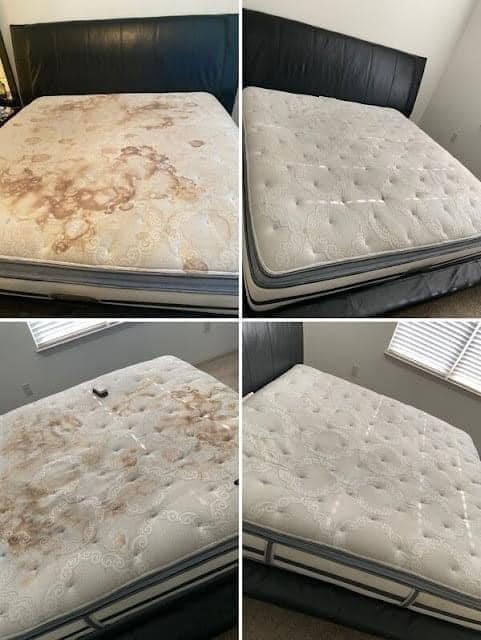ADVERTISEMENT
1. Strip the Bed:
Remove all bedding, including sheets, pillowcases, and mattress protectors. Wash them in hot water to kill dust mites and remove any stains or odors.
2. Vacuum the Mattress:
Use the upholstery attachment on your vacuum cleaner to thoroughly vacuum the entire mattress surface. Pay special attention to seams and crevices where dust mites and debris can accumulate.
3. Spot Clean Stains:
For different types of stains, use the appropriate method:
- General Stains: Mix a few drops of liquid dish soap with cold water. Dampen a clean cloth with the solution and gently blot the stain. Avoid soaking the mattress.
- Blood Stains: Use hydrogen peroxide. Dab a small amount on the stain, let it bubble up, then blot with a clean cloth. Repeat if necessary.
- Urine Stains: Mix equal parts white vinegar and cold water in a spray bottle. Lightly spray the stain, then blot with a clean cloth. Sprinkle baking soda over the area and let it sit for several hours before vacuuming it up.
4. Deodorize the Mattress:
Sprinkle a generous amount of baking soda over the entire mattress surface. For a fresh scent, you can add a few drops of essential oils (such as lavender) to the baking soda before sprinkling. Let the baking soda sit for at least a few hours, or overnight if possible, to absorb odors.
5. Vacuum Again:
After the baking soda has had time to work, vacuum the mattress thoroughly to remove all the baking soda and any remaining dust.
6. Address Dust Mites:
While vacuuming and washing bedding regularly helps, using a mattress protector can provide an additional barrier against dust mites. Consider using allergen-proof mattress and pillow covers.
7. Allow to Air Out:
If possible, let the mattress air out for a few hours before putting any bedding back on. This helps ensure any remaining moisture is evaporated, reducing the risk of mold and mildew.
Preventive Measures:
read more on next page
ADVERTISEMENT
